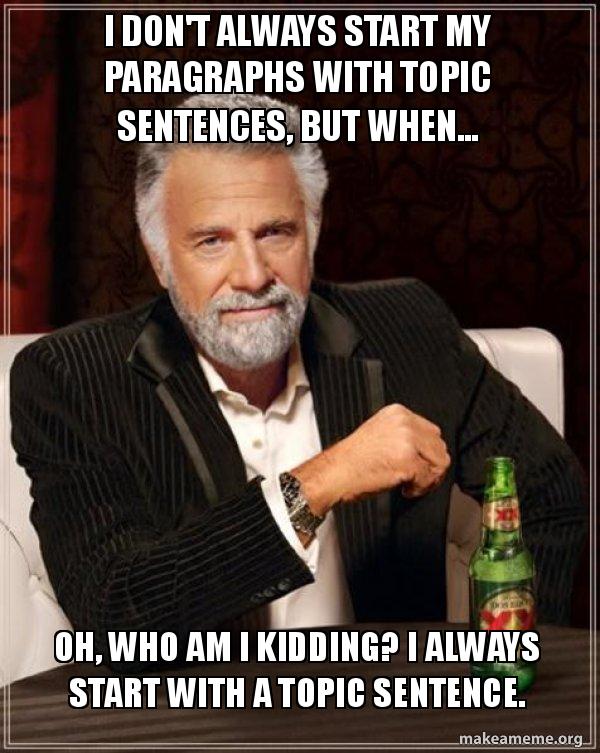
Understanding Topic Sentences and Body Paragraphs
Introduction to Topic Sentences and Body Paragraphs
In this lecture, we will break down the role of topic sentences in different kinds of body paragraphs.
A well-constructed essay typically contains several different types of body paragraphs, each serving a distinct purpose. These paragraphs work together to build your argument or discussion, support your thesis, and provide evidence.
Today, we’ll focus on three specific types of body paragraphs: background paragraphs, argumentative paragraphs, and example paragraphs.
Every body paragraph you write has two key goals:
- Introduce the main focus of the paragraph.
- Create a connection to other parts of the essay so that readers can easily follow the flow of ideas.
Let’s consider a notional paper where the topic is the 19th Amendment to the U.S. Constitution, with this thesis statement:
The ratification of the 19th Amendment was a crucial victory for the women’s suffrage movement.
Background Paragraph Topic Sentences
- Catch Phrase: “Before I say more…” Let me provide background and / or context about [topic or sub-topic].
What it should do: Introduce the specific context or information the reader needs about the topic.
Connection it makes: It usually links to the overall topic of the essay or paper, providing the necessary information that the reader needs to move forward.
Example: “The 19th Amendment was an important step forward in the historical struggle for women’s voting rights.”
Why This Works: the purpose of the background paragraph is to provide context for the topic, which is the 19th Amendment. This topic sentence makes clear that some history and background information is forthcoming to help readers understand what the 19th Amendment was, and why it was important.
Argumentative Paragraph Topic Sentences
- Catch Phrase: “It’s true because…” My thesis statement is true because [main point].
What it should do: Introduce the main point that this particular paragraph will argue or discuss.
Connection it makes: It connects directly to your thesis statement because each argumentative paragraph is a building block of your overall argument or discussion.
Example: “One important reason why the ratification of the 19th Amendment was a crucial victory for the women’s suffrage movement is because it demonstrates that social changes often stem from legal reforms.”
Why This Works: the purpose of the argumentative paragraph is to connect to the thesis statement (the ratification of the 19th Amendment was a crucial victory for the women’s suffrage movement) and introduce a main point (social changes often stem from legal reforms).
Example Paragraph Topic Sentences
- Catch Phrase (argumentative): “For example…” Here is an event or situation that illustrates [main point] in action.
- Catch Phrase (background): “For example…” Here is an event or situation that provides important background info or context.
What it should do: Provide a concrete scenario or detailed example of a main point from a previous argumentative paragraph in action, or provide key context on the main topic or a sub-topic. In this case, the writer has chosen an example topic sentence to support the previous argumentative paragraph.
Connection it makes: It links back to the main point of the previous argumentative paragraph and provides a more detailed, real-world example to reinforce it.
“An event that illustrates the social changes often stem from legal reforms was the election of the first female member of Congress, Jeanette Rankin, in 1916.”
Why This Works: the purpose of the example paragraph is to provide a concrete event or scenario (the election of the first female member of Congress that supports the main point of a preceding argumentative paragraph (social changes often stem from legal reforms).
Conclusion
Understanding how topic sentences work in different types of paragraphs is essential for creating clear, logical, and well-structured essays. As you write, always make sure that your topic sentences guide your readers through your argument by introducing the focus of each paragraph and connecting it to other parts of the essay. Whether you’re providing background, making an argument, or illustrating a point, your topic sentence is your reader’s roadmap.